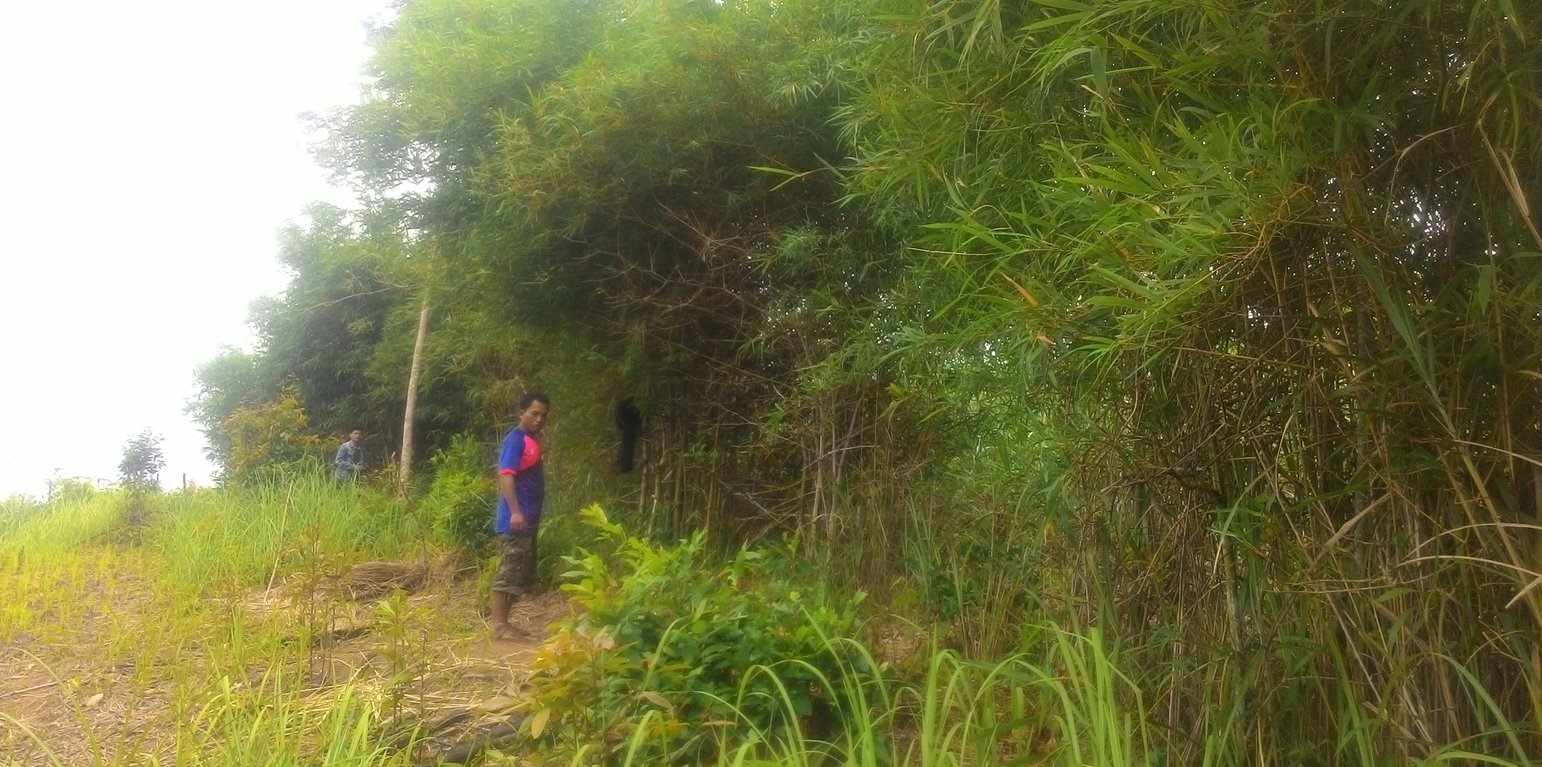



ຕົ້ນໄມ້ໃຜ່ ຖືໄດ້ວ່າ ເປັນໄມ້ ທ່ີມີປະໂຫຍດ ຕໍ່ມະນຸດ ເພາະວ່າສາມາດ ນໍາມາເປັນອາຫານ, ນໍາໃຊ້ເຂົ້າໃນການຈັກສານ ເປັນເຄ່ືອງໃຊ້ຕ່າງໆ ແລະ ນໍາມາປຸກສ້າງ ເປັນທ່ີຢູອາໃສໄດ້. ນອກ ຈາກນັ້ນ, ຄຸນປະໂຫຍດ ຂອງການປູກໄມ້ໃຜ່ ຍັງສາມາດ ຊ່ວຍຮັກສາ ຄວາມຊຸ່ມຊ່ືນ ຂອງດິນ ເນ່ືອງຈາກໃບໃຜ່ ທີ່ລົ່ນສາມາດ ຍ່ອຍລະຫຼາຍ ກາຍເປັນຝຸ່ນໃຫ້ດິນ, ສາມາດ ສ້າງຈຸລິນຊີ ໃນດິນ ແລະ ສາມາດ ຢຶດເກາະດີນ ປ້ອງກັນດິນເຈື່ອນ ໃນເຂດຄອ້ຍຊັນ. ຈາກປະສົບການ ແລະ ບົດຮຽນ ໃນປີ 2010, ພາຍຫັຼງ ທ່ີໄດ້ຮັບຜົນກະທົບ ຈາກພາຍຸເກດສະຫນາ ເຮັດໃຫ້ພື້ນທ່ີການຜະລິດ ຂອງຊາວກະສິກອນ ໄດ້ຮັບຄວາມເສຍຫາຍ ຢ່າງໃຫຍ່ຫຼວງ ຊຶ່ງເຮັດໃຫ້ຊາວກະສິກອນ ຕ້ອງໄດ້ຊອກຫາ ວິທີທາງ ໃນການປ້ອງກັນຜົນກະທົບ ຈາກໄພພະບັດດັ່ງກ່າວນັ້ນ ໂດຍການປູກໄມ້ໃຜ່ ເປັນແຖວ ອອ້ມຮົ້ວ ເພື່ອປ້ອງກັນລົມພັດແຮງ ໃສ່ພື້ນທ່ີການຜະລິດ. ໃນເບ້ຶອງຕົ້ນ ຊາວກະສິກອນ ໄດ້ສັງເກດເຫັນວ່າ ເບ້ຍໄມ້ໃຜ່ ທ່ີເກີດຂ້ືນເອງ ຕາມທໍາມະຊາດ ຢູ່ແຄມຫ້ວຍ, ພື້ນທ່ີ ທ່ີເປັນດອນມີຢ່າງຫຼວງຫຼາຍ ແລະ ແຜ່ຂະຫຍາຍດີ ຊ່ຶງຊາວກະສິກອນ ກ່ໍສົນໃຈ ຢາກທົດລອງປູກ 2 ຟຸ່ມກ່ອນ ກ່ໍເຫັນວ່າ ຟຸ່ມໄມ້ໃຜ່ໃຫຍ່ໄວ ແລະ ຕົ້ນສູງ ທ່ີສາມາດ ຕາ້ນທານກັບລົມໄດ້ເປັນຢ່າງດີ. ດັ່ງນັ້ນ, ຊາວກະສິກອນ ຈ່ຶງໄດ້ຕັດສິນໃຈ ນໍາໄມ້ໃຜ່ມາປູກ ອອ້ມສວນຢາງໂບງ ພາຍໃນເນ້ືອທ່ີ ປະມານ 1 ເຮັກຕາ. ນອກຈາກນ້ີ, ໃນແຕ່ລະປີ ຊາວກະສິກອນ ຕອ້ງໄດ້ໄປຕັດໄມ້ ຢູ່ປ່າຈໍານວນຫຼວງຫຼາຍ ຊ່ຶງເປັນການທໍາລາຍ ຊັບພະຍາກອນປ່າໄມ້ ເພື່ອມາເຮັດຮົ້ວອອ້ມສວນ ພື້ນທ່ີທໍາການຜະລິດ ແລະ ເປັນການສ້ີນເປືອງເວລາ ໃນການໄປຕັດ, ແບກອອກມາຈາກປ່າ ແລະ ໄລຍະທາງໄກ ໃນແຕ່ລະປີ ກ່ໍຕອ້ງໄດ້ມີການບົວລະບັດຮັກສາ, ອານາໄມ, ເສຍຫຍ້າຮົ້ວ. ນອກຈາກນ້ີ, ກ່ໍຍັງມີບັນຫາ ກ່ຽວກັບ ສັດປ່າ ແລະ ສັດລຽ້ງ ເຂົ້າມາກິນຜົນ ລະ ປູກ ເຮັດໃຫ້ພື້ນທ່ີ ທໍາການຜະລິດ ໄດ້ຮັບຄວາມເສຍຫາຍ (ປະມານ 70-80% ຂອງພື້ນທີ່ ທີ່ໄດ້ຮັບຄວາມເສຍຫາຍ). ດັ່ງນັ້ນ, ກິດຈະກຳ ການເຮັດຮົ້ວ ກໍ່ມີຄວາມສຳຄັນຫຼາຍ ທີ່ຊາວກະສິກອນ ຕ້ອງໄດ້ເຮັດ ແລະ ການບຳລຸງຮັກສາ ແມ່ນເຮັດໃນປີທຳອິດ ຂອງການປູກໄມ້ໃຜ່. ຂັ້ນຕອນ ໃນການປູກ ແມ່ນຂຸດຂຸມເລິກ ປະມານ 20 ຊັງຕີແມັດ, ກວ້າງ 20 ຊັງຕີແມັດ ແລະ ໄລຍະຫ່າງແມ່ນ 2 ແມັດ, ວິທີການປູກ ແມ່ນເລືອກຕໍໃຜ່ ທ່ີມີອາຍຸ 1-2 ປີ, ຕັດໂຄນເຫງົ້າໃຫ້ຂາດ ຈາກກໍແມ່ ແລ້ວຂຸດຕັດຮາກ, ເລືອກຂະຫນາດຕົ້ນ ຫຼື ຕໍ ທ່ີບໍ່ໃຫ່ຍເກີນໄປ ເລືອກຂະຫນາດລໍາຕົ້ນເທົ່າແຂນ ຍາວປະມານ 50-80 ຊັງຕີແມັດ, ການປູກ ແມ່ນໃຫ້ນໍາຕໍໃຜ່ໄປປູກພາຍໃນວັນດຽວ ທ່ີຕັດເລີຍ ບ່ໍຄວນປະໄວ້ດົນເກີນ 2 ວັນ. ໄລ ຍະເວລາທ່ີເຫມາະສົມ ແລະ ໄດ້ຜົນດີທ່ີສຸດ ໃນການປູກໄມ້ໃຜ່ ແມ່ນກາງເດືອນພຶດສະພາ ຫາ ເດືອນມີຖຸນາ ເພາະເປັນຊ່ວງງລະດູຝົນ ສາມາດອາໃສນໍາ້ຝົນຊ່ວຍ ແລະ ເປັນໄລຍະ ທີໄມ້ໃຜ່ຈະລີນເຕີບໂຕໄວ ແລະ ຫຸຼດຜອ່ນ ອັດຕາຄວາມສ່ຽງ ບໍ່ໃຫ້ໄມ້ໃຜ່ ທີເຮົາປູກນັ້ນຕາຍ. ການບົວ ລະ ບັດຮັກສາ ຖາ້ຫາກວ່າບາງປີ ຝົນຕົກບ່ໍຫຼາຍ ເຮົາຄວນເບ່ີງແຍ່ງ ໃນຊວ່ງລະດູແລ້ງ ຫາກມີບາງຕົ້ນຫ່ຽວແຫ້ງ ກໍ່ຄວນເອົານໍາ້ໄປຫົດ 5-7 ວັນ/ຄັ້ງເພື່ອ ບໍ່ໃຫ້ໄມ້ໃຜ່ຕາຍ ຈົນກວ່າຈະຮອດລະດູຝົນ ຖ້າໄມ້ໃຜ່ບໍ່ຕາຍ ຮອດປີທີ 2 ແມ່ນບໍ່ຈໍາເປັນ ຕອ້ງຫົດນໍາ້ອີກ ພຽງແຕ່ຖ່າງຫຍາ້ ອະນາໄມ 2 ຄັ້ງ/ປີ. ຜົນດີ ຂອງເຕັກນິກ ການປູກໄມ້ໃຜ່ລອ້ມຮົ້ວ ແມ່ນໃຊຕົ້ນທຶນ ບ່ໍສູງ ແລະ ການປູກໄມ້ໃຜ່ ຍັງເປັນຜົນດີ ຕໍ່ສ່ີງແວດລອ້ມ, ເສດຖະກີດ ແລະ ສັງຄົມ. ໄມ້ໃຜ່ ສາມາດ ເພີ່ມທາດອາຫານໃນດິນ, ເພີ່ມອອກຊີເຈນ ໃນອາ ກາດ ແລະ ເຮັດໃຫ້ອຸ່ນຫະພູມ ໃນເຂດພື້ນທ່ີ ເຢັນລົງ. ສາມາດ ກິນຫນ່ໍໄດ້, ລໍາໃຜ່ ກ່ໍສາມາດໃຊ້ປະໂຫຍດ ໄດ້ຫຼາກຫຼາຍ ເປັນຕົ້ນ ແມ່ນໃຊ້ເຂົ້າໃນການຈັກສານ. ສາມາດ ຂາຍເປັນສິນຄ້າ ໃນລາຄາ 40.000 ກີບ/ກິໂລ (ສໍາລັບຫນໍ່ໄມ້ແຫ້ງ), ສາມາດຂາຍໄດ້ 40 ກິໂລ/ປີ ການເກັບກ່ຽວແມ່ນ 3 ປີ ຈ່ືງໄດ້ເກັບກ່ຽວ. ໃນປະຈຸບັນ, ມີຄອບຄົວ ຈໍານວນຫນ່ືງ ກ່ໍໄດ້ຖອດຖອນບົດ ຮຽນ ແລະ ນໍາໃຊ້ເຕັກນິກດັ້ງກ່າວ ໂດຍການເອົາໄມ້ໃຜ່ ໄປປູກອອ້ມ ຢູ່ພື້ນທ່ີນາ ແລະ ຢູ່ສວນ ເພື່ອເປັນການປ້ອງກັນສັດ ແລະ ນໍາໃຊ້ປະໂຫຍດອ່ືນໆ.
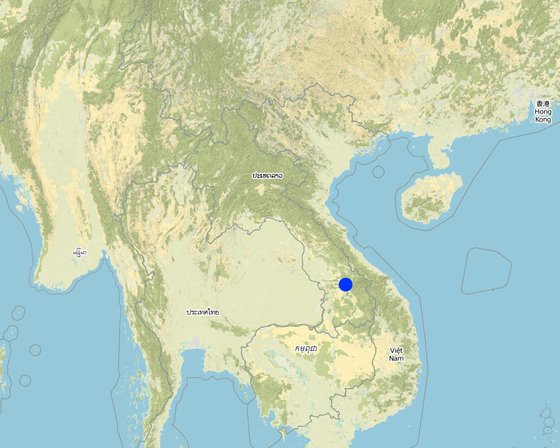
Location: ເມືອງສະໝ້ວຍ, ແຂວງສາລະວັນ, Lao People's Democratic Republic
No. of Technology sites analysed: 2-10 sites
Spread of the Technology: evenly spread over an area (approx. 0.1-1 km2)
In a permanently protected area?:
Date of implementation: 2009; less than 10 years ago (recently)
Type of introduction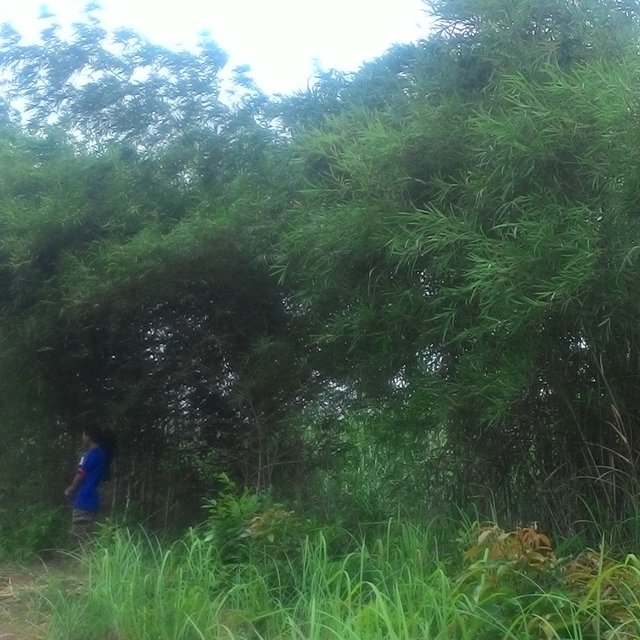
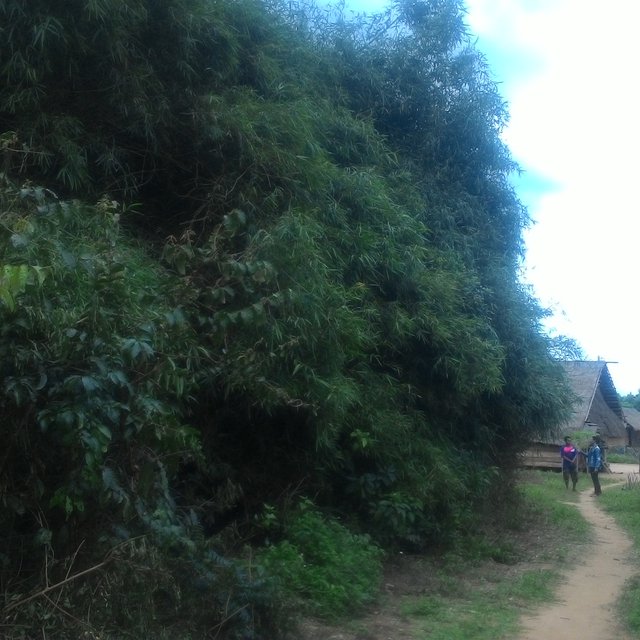





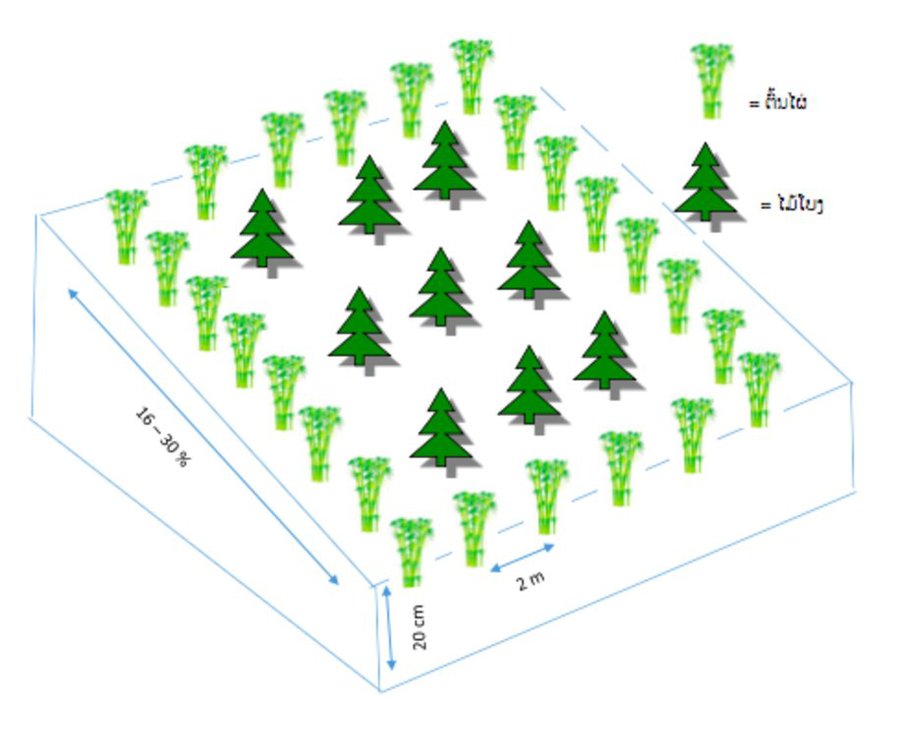
| Specify input | Unit | Quantity | Costs per Unit (ກີບ) | Total costs per input (ກີບ) | % of costs borne by land users |
| Equipment | |||||
| ພ້າ | ດວງ | 4.0 | 30000.0 | 120000.0 | 100.0 |
| ຂວານ | ດວງ | 1.0 | 100000.0 | 100000.0 | 100.0 |
| Total costs for establishment of the Technology | 220'000.0 | ||||
| Total costs for establishment of the Technology in USD | 27.5 | ||||
| Specify input | Unit | Quantity | Costs per Unit (ກີບ) | Total costs per input (ກີບ) | % of costs borne by land users |
| Labour | |||||
| ແຮງງານ ເສຍຫຍ້າ | ວັນງານ | 6.0 | 30000.0 | 180000.0 | 100.0 |
| Total costs for maintenance of the Technology | 180'000.0 | ||||
| Total costs for maintenance of the Technology in USD | 22.5 | ||||
ຊາວກະສິກອນ ສາມາດ ຂາຍຫນໍ່ໄມ້ໄດ້ 1,600,000 ກີບ/ປີ
ເພີ່ມລາຍຮັບ ຈາກການຂາຍໜໍ່ໄມ້ ແລະ ຢາງໂບງ
ສາມາດ ຫຸຼດຜ່ອນ ແຮງງານ ໃນການເຂົ້າໄປຕັດໄມ້ ມາເຮັດຫັຼກຮົ້ວ
ເພີ່ມຄວາມອຸດົມ ສົມບູນ ຂອງດິນ
ຕົນໄມ້ໃຜ່ທີ່ໃຫຍ່ ແລະ ສູງຂື້ນ ສາມາດປ້ອງກັນ ແລະ ຕາ້ນທານ
ກັບລົມພັດແຮງ
ຫຸຼດຜອ່ນ ຄວາມແຮງ ຂອງລົມພັດທ່ີພັດເຂົ້າໃສ່ສວນຢາງໂບງ
ຫຸຼດຜອ່ນ ບັນຫາ ການຕັດໄມ້ທໍາລາຍປ່າ ເພຶ່ອມາເຮັດຮົ້ວ